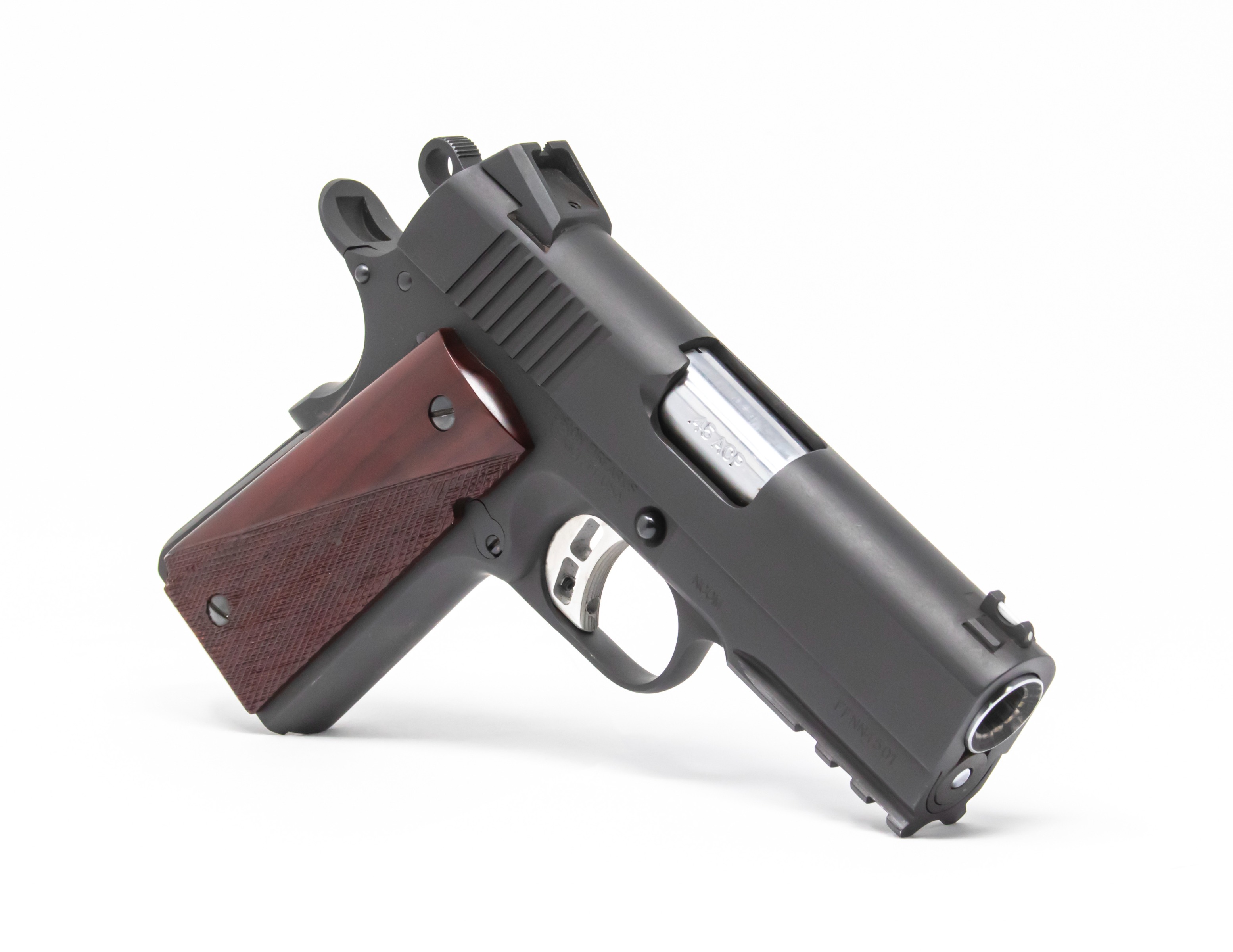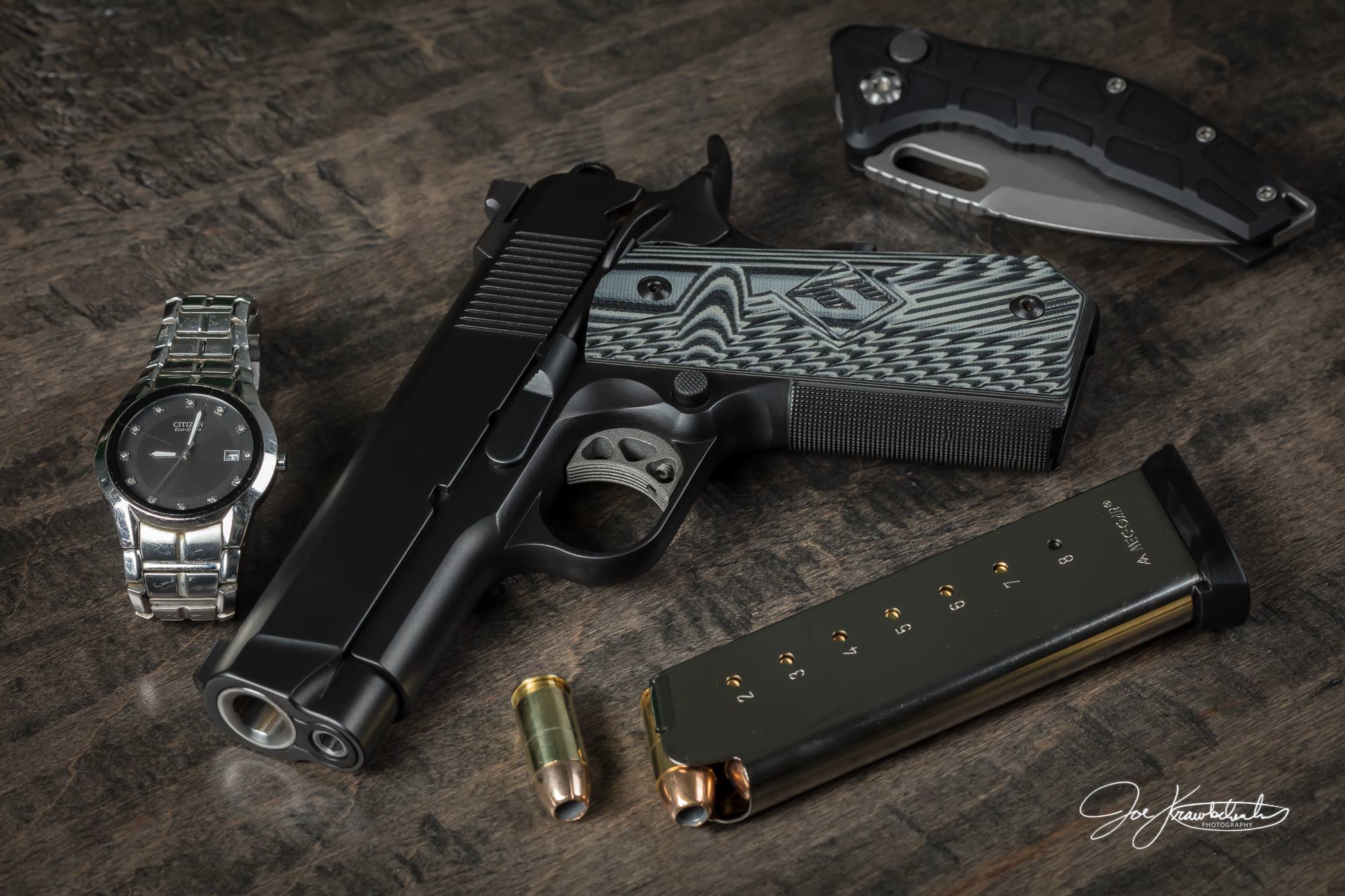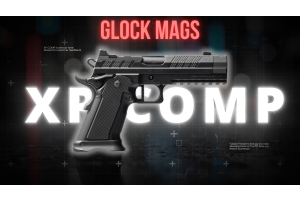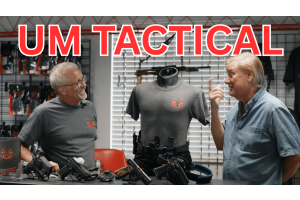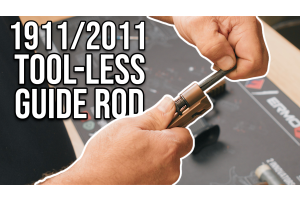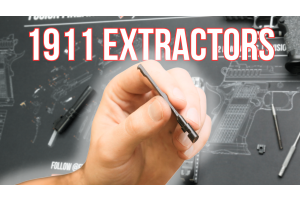9mm vs. 45 ACP: A Comprehensive Comparison of Self-Defense Ammo and Stopping Power
0%
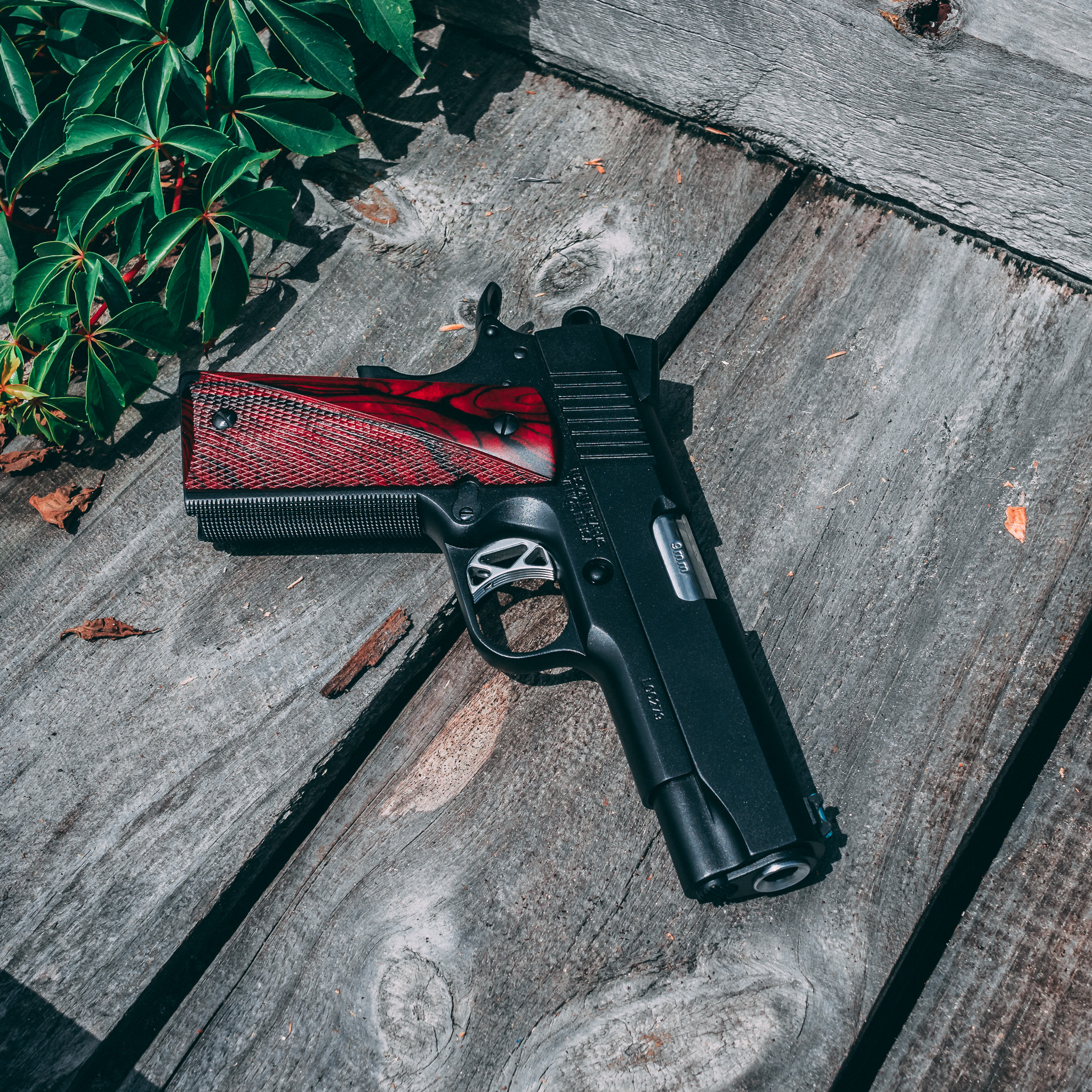
Choosing the right ammunition for self-defense is a matter of utmost importance when it comes to personal safety. The debate between 9mm and 45 ACP has persisted for years, with enthusiasts and experts weighing in on the advantages of each caliber. In this comprehensive article, we will delve into the differences between 9mm and 45 ACP, exploring their self-defense capabilities, stopping power, bullet technology, and other essential factors to help you make an informed decision. By the end, you will have a thorough understanding of these calibers and be better equipped to choose the ideal ammunition for your self-defense needs.
Key Points:
-
Self Defense: Both 9mm and 45 ACP are highly regarded for self-defense, with popularity among concealed carry enthusiasts and law enforcement agencies due to their proven effectiveness in real-life scenarios.
-
Stopping Power: The 45 ACP is known for its larger, heavier bullets and perceived superior stopping power, while modern 9mm hollow point bullets offer comparable stopping power with added advantages like higher magazine capacity and lower recoil.
-
Hollow Point Bullets: Hollow point bullets are the gold standard for self-defense ammunition, delivering controlled expansion upon impact, creating larger wound channels, and reducing the risk of over-penetration.
-
Muzzle Velocity: 9mm generally exhibits higher muzzle velocities compared to 45 ACP, resulting in flatter trajectories, increased accuracy, and better performance at longer distances.
-
Nickel Plated Brass Casings: Both calibers offer nickel-plated brass casings, providing smoother feeding and ejection, enhancing the overall reliability of semi-automatic firearms.
-
Target Practice: 9mm is favored for target practice due to its affordability and lower recoil, enabling shooters to practice more frequently.
-
Home Defense: Choosing the right ammunition for home defense requires considering ballistic performance, over-penetration risks, and collateral damage concerns.
-
Jacketed Hollow Points (JHP): JHP bullets are the go-to choice for self-defense, offering reliable feeding and devastating wound channels upon expansion.
-
Law Enforcement Officers: Both 9mm and 45 ACP have been widely used by law enforcement agencies, indicating their effectiveness in real-world defensive situations.
-
Concealed Carry: When selecting a caliber for concealed carry, consider factors such as stopping power, recoil management, and magazine capacity.
Self Defense
In any discussion about ammunition, self-defense must be the focal point. The 9mm and 45 ACP are highly regarded for their effectiveness in self-defense situations, making them popular among concealed carry enthusiasts and law enforcement agencies alike. Both calibers have a proven track record of performance in real-life scenarios, and understanding their respective strengths and weaknesses is essential to making a well-informed choice.
When faced with a potential threat, having the right self-defense ammunition can be the deciding factor in a life-or-death situation. The 9mm and 45 ACP have consistently demonstrated their capabilities in critical encounters, and grasping their unique characteristics is crucial for making an educated decision.
Importance of Self Defense:
Self-defense is a fundamental human right and a crucial aspect of personal safety. It empowers individuals to take control of their own security, ensuring they are prepared and capable of handling potential threats. In today's world, where crime and violence can occur unexpectedly, knowing how to defend oneself can mean the difference between life and death.
Self-defense is not limited to physical confrontations alone; it encompasses a comprehensive approach to personal security. This includes situational awareness, de-escalation techniques, physical fitness, and, when necessary, the use of appropriate tools such as firearms for protection.
Role of Firearms and Ammunition in Self Defense:
Firearms, when used responsibly and within the bounds of the law, can be effective tools for self-defense. They offer a level of force that can help level the playing field between an individual and a potential attacker. However, the decision to own and carry a firearm for self-defense comes with significant responsibilities, including proper training, secure storage, and adherence to all relevant laws and regulations.
Choosing the right ammunition is just as vital as selecting the firearm itself. The effectiveness of a firearm in a self-defense scenario is heavily influenced by the type of ammunition used. This is where the debate between 9mm and 45 ACP becomes essential, as both calibers have distinct characteristics that can impact self-defense outcomes.
9mm for Self Defense:
The 9mm has become a popular choice for self-defense due to its balanced characteristics. It offers a good compromise between manageable recoil and sufficient stopping power. One of the 9mm's key advantages is its higher magazine capacity, which allows for more rounds to be carried without increasing the size and weight of the firearm significantly.
Additionally, advancements in bullet technology, especially in hollow point designs, have improved the terminal ballistics of 9mm ammunition. Modern 9mm hollow points can deliver consistent expansion and penetration, making them effective at stopping threats while reducing the risk of over-penetration and collateral damage.
Moreover, the 9mm's relatively lower recoil makes it easier to shoot accurately, especially for shooters with less experience or those with physical limitations. This ease of shooting enables individuals to place accurate follow-up shots in high-stress situations, where shot placement is critical.
45 ACP for Self Defense:
The 45 ACP, on the other hand, is favored by those who place a premium on stopping power and have the ability to manage its heavier recoil. Its larger, heavier bullets tend to create larger wound channels, potentially causing more immediate incapacitation in some scenarios.
While the 45 ACP may have a reduced magazine capacity compared to the 9mm, it makes up for it with the sheer energy delivered by its projectiles. The caliber's reputation for stopping power has made it a preferred choice for some law enforcement agencies and individuals who prioritize maximum impact.
However, it is essential to consider that the heavier recoil of the 45 ACP can make it more challenging for some shooters to maintain rapid and accurate follow-up shots. Recoil management is a crucial aspect of self-defense shooting, and shooters must be comfortable with the caliber they choose to carry.
Selecting the Right Ammunition for Self Defense:
The debate between 9mm and 45 ACP for self-defense ultimately comes down to individual needs, preferences, and shooting proficiency. Both calibers have their strengths and limitations, and the ideal choice will depend on factors such as:
-
Shooter Proficiency: Shooters with limited experience may find the 9mm's lower recoil more manageable, allowing them to focus on accurate shot placement.
-
Concealed Carry: For concealed carry, factors such as the size and weight of the firearm, as well as the comfort of carrying, become essential considerations.
-
Capacity vs. Stopping Power: The balance between ammunition capacity and stopping power should be weighed according to personal risk assessments and potential scenarios.
-
Ballistic Performance: Consider the terminal ballistics of both calibers, including bullet penetration, expansion, and the ability to deliver effective stopping power.
-
Personal Preference: Some individuals simply prefer one caliber over the other based on subjective factors like feel and shooting experience.
Self-defense is a fundamental right, and owning a firearm for protection is a choice many individuals make to enhance their personal security. The decision between 9mm and 45 ACP for self-defense ammunition is an essential one, as it can significantly impact one's ability to respond effectively to threats.
The 9mm offers a balance between manageable recoil, higher magazine capacity, and modern hollow point technology, making it a popular choice for self-defense. On the other hand, the 45 ACP's larger, heavier bullets provide a reputation for greater stopping power, but its heavier recoil may require more extensive training and practice.
In the end, selecting the right ammunition for self-defense requires a thoughtful evaluation of individual needs, preferences, and abilities. Responsible gun ownership, proper training, and adherence to all applicable laws and regulations are essential for ensuring safety and security in self-defense scenarios. Remember, the best self-defense tool is one that is backed by knowledge, skill, and a commitment to personal safety.
Stopping Power
Stopping power is a critical and often debated aspect when comparing the 9mm and 45 ACP calibers for self-defense ammunition. It refers to the caliber's ability to incapacitate or stop a threat effectively, minimizing the risk to the defender and others in the vicinity. In this expanded section, we will delve deeper into the concept of stopping power, the factors that influence it, and how it plays a crucial role in selecting the right ammunition for self-defense purposes.
Understanding Stopping Power:
Stopping power is a complex and multifaceted concept that involves various factors related to terminal ballistics, anatomy, and the physiological response of a human body when impacted by a projectile. The ultimate goal of self-defense ammunition is to neutralize the threat as quickly as possible, preventing any further harm to the defender or others. Stopping power aims to achieve this by incapacitating the attacker effectively and rapidly.
When evaluating stopping power, it's crucial to consider both the physical incapacitation and the psychological impact on the threat. Physical incapacitation refers to the immediate disruption of the attacker's ability to continue the assault, while psychological impact refers to the reaction of the attacker upon realizing the severity of their injury. In some cases, the psychological shock alone can cause the threat to disengage, even if physical incapacitation is not immediate.
Factors Influencing Stopping Power:
-
Bullet Design: The design of the bullet plays a significant role in stopping power. Hollow point bullets, for example, are specifically engineered to expand upon impact, creating a larger wound channel and transferring more energy to the target. This expansion increases the likelihood of disrupting vital organs and nerve pathways, leading to rapid incapacitation.
-
Penetration: Adequate penetration is crucial for ensuring that the bullet reaches the vital organs or central nervous system. A balance between penetration depth and expansion is essential, as over-penetration can pose risks to bystanders.
-
Bullet Placement: Shot placement is the most critical factor affecting stopping power. Hitting vital areas, such as the heart, major arteries, or the central nervous system, is more likely to lead to rapid incapacitation.
-
Caliber and Bullet Weight: The caliber and bullet weight can influence the amount of kinetic energy transferred to the target. Heavier bullets tend to deliver more energy, but this must be balanced with the ability to control recoil and deliver accurate follow-up shots.
-
Velocity: Muzzle velocity affects the bullet's kinetic energy, which is a significant factor in stopping power. A faster-moving bullet carries more energy and can cause greater tissue damage.
-
Personal Physiology: The physical and mental state of the attacker can also influence their response to being shot. Factors such as adrenaline, intoxication, or mental illness may impact how quickly the attacker's body responds to the injury.
Debunking Myths:
Stopping power has given rise to several myths and misconceptions in the firearms community. One common myth is that a single shot from a high-caliber firearm will always stop an attacker instantly. In reality, no caliber guarantees immediate incapacitation with a single shot. Even high-powered rounds may require multiple hits to effectively stop a determined attacker.
Another myth is that the bigger the caliber, the better the stopping power. While larger calibers like the 45 ACP can deliver more energy, other factors such as shot placement, bullet design, and penetration are equally crucial. Shot placement is paramount, and multiple well-placed shots from a smaller caliber can be more effective than poorly placed shots from a larger caliber.
Selecting the Right Ammunition for Stopping Power:
When it comes to self-defense ammunition, the choice between 9mm and 45 ACP for stopping power can be challenging. Both calibers have demonstrated their effectiveness in real-life scenarios, and each has its strengths and limitations.
For the 9mm, advancements in bullet technology, especially in hollow point designs, have significantly improved its stopping power. Modern 9mm hollow point ammunition can deliver adequate penetration, consistent expansion, and energy transfer, making it an effective choice for self-defense purposes.
The 45 ACP, with its larger, heavier bullets, has a reputation for greater stopping power. Its larger diameter can create larger wound channels, potentially leading to more immediate incapacitation. However, the heavier recoil of the 45 ACP can be a challenge for some shooters, affecting their ability to deliver accurate follow-up shots in high-stress situations.
Ultimately, shot placement, bullet design, penetration, and accurate follow-up shots are critical for maximizing stopping power, regardless of the caliber chosen. Regular training and practice are essential for developing shooting skills and understanding how ammunition performs in different scenarios.
Stopping power is a complex and multifaceted concept that revolves around the ability of ammunition to incapacitate or stop a threat effectively. It involves a combination of factors such as bullet design, penetration, shot placement, and individual physiology. Both the 9mm and 45 ACP have demonstrated their effectiveness in self-defense scenarios, and each offers unique advantages.
When selecting self-defense ammunition, focus on reliable, modern hollow point designs that deliver consistent expansion and penetration. Regular training and practice are equally important for developing proficiency with your chosen caliber and maximizing stopping power. Ultimately, the effectiveness of any caliber in self-defense hinges on responsible gun ownership, training, and adherence to all applicable laws and regulations.
Hollow Point Bullets
Hollow point bullets are at the forefront of modern self-defense ammunition technology. Their design and function make them the preferred choice for those seeking maximum stopping power and reduced risk of over-penetration in self-defense scenarios. In this expanded section, we will delve deeper into the mechanics of hollow point bullets, their benefits, and how they contribute to enhancing the effectiveness of both the 9mm and 45 ACP calibers for self-defense.
The Mechanics of Hollow Point Bullets:
Hollow point bullets are specifically engineered to expand upon impact. The key feature of these bullets is a cavity or hollowed-out tip at the projectile's nose, which allows for controlled expansion upon encountering resistance, such as soft tissue or other barriers. When the hollow point bullet strikes a target, the kinetic energy forces the tip to deform, causing the cavity to expand.
As the hollow point expands, it creates a larger wound channel, transferring more energy to the target. This enhanced energy transfer leads to greater tissue disruption and, consequently, more effective stopping power. The wider wound channel increases the likelihood of hitting vital organs or nerve pathways, potentially incapacitating the attacker more rapidly.
Benefits of Hollow Point Bullets for Self Defense:
-
Stopping Power: Hollow point bullets are renowned for their superior stopping power compared to full metal jacket (FMJ) rounds. The controlled expansion of the hollow point significantly increases the bullet's ability to incapacitate the threat effectively, stopping the attack sooner and minimizing the risk to the defender.
-
Reduced Risk of Over-Penetration: One of the significant advantages of hollow point bullets for self-defense is their reduced risk of over-penetration. Over-penetration occurs when a bullet passes through the intended target and continues to travel, potentially posing a threat to bystanders or property. The controlled expansion of hollow point bullets reduces the likelihood of bullets exiting the attacker and striking unintended targets.
-
Tissue-Specific Energy Transfer: Hollow point bullets are designed to transfer energy primarily to the target, minimizing the risk of energy wastage through excessive penetration. By depositing most of their energy within the target, hollow points maximize their stopping power and incapacitation potential.
-
Reliable Feeding in Semi-Automatic Firearms: Hollow point bullets are engineered to feed reliably in semi-automatic firearms, ensuring proper functioning and reducing the chances of malfunctions during critical moments. This reliability is vital for self-defense situations where every round counts.
-
Reduced Ricochet Risk: The controlled expansion and reduced over-penetration of hollow point bullets also decrease the risk of ricochets. This is particularly important in urban or confined environments where ricochets can pose significant dangers to bystanders.
Hollow Point Bullets in the 9mm and 45 ACP:
Both the 9mm and 45 ACP calibers are available with a wide range of hollow point ammunition designed explicitly for self-defense purposes. The effectiveness of these rounds depends on various factors, including bullet design, velocity, and shot placement.
In the 9mm caliber, modern hollow point designs have greatly improved its terminal ballistics, making it a popular choice for concealed carry and self-defense. The 9mm's higher magazine capacity, coupled with the reliable expansion of hollow point bullets, allows for more rounds to be carried, increasing the defender's ammunition capacity.
For the 45 ACP, hollow point bullets maximize the caliber's stopping power potential. The 45 ACP's larger diameter projectiles, when designed as hollow points, create larger wound channels, potentially leading to more immediate incapacitation.
It is essential to note that while hollow point bullets are effective for self-defense, bullet technology alone cannot guarantee immediate incapacitation. Shot placement, individual physiology, and the defender's ability to deliver accurate follow-up shots are also crucial factors in achieving effective stopping power.
Hollow point bullets have revolutionized self-defense ammunition by providing enhanced stopping power and reduced risk of over-penetration. Their controlled expansion upon impact creates larger wound channels, transferring more energy to the target and improving the likelihood of rapid incapacitation. Both the 9mm and 45 ACP calibers benefit from modern hollow point designs, offering effective self-defense options for a wide range of users.
As with any self-defense ammunition, responsible gun ownership, regular training, and adherence to all applicable laws and regulations are essential. Understanding the mechanics and benefits of hollow point bullets empowers individuals to make informed decisions about their self-defense ammunition, ensuring they are better prepared to protect themselves and their loved ones in critical situations.
Muzzle Velocity
Muzzle velocity is a crucial aspect of ammunition performance that directly influences the trajectory, accuracy, and terminal ballistics of a bullet. It refers to the speed at which a projectile exits the barrel of a firearm. Understanding muzzle velocity is essential for shooters, as it has significant implications for various shooting applications, including self-defense, target shooting, and long-range engagements. In this expanded section, we will delve deeper into the concept of muzzle velocity, its factors, and its impact on different shooting scenarios.
The Basics of Muzzle Velocity:
Muzzle velocity is typically measured in feet per second (fps) or meters per second (m/s) and provides a measure of the bullet's initial speed when it leaves the firearm's muzzle. The velocity is at its highest at this point and decreases as the bullet travels downrange due to air resistance and gravity.
The higher the muzzle velocity, the faster the bullet travels, and the flatter its trajectory will be. In practical terms, a flatter trajectory means the bullet maintains a more consistent point of impact at varying distances, making it easier for the shooter to achieve accurate shots without adjusting the sights or optics.
Factors Affecting Muzzle Velocity:
-
Propellant Type and Charge: The type and amount of gunpowder (propellant) used in a cartridge significantly influence muzzle velocity. Different propellants burn at varying rates, affecting the pressure build-up in the firearm's chamber. A higher-pressure build-up generally results in higher muzzle velocities.
-
Bullet Weight: The weight of the bullet plays a role in determining muzzle velocity. Heavier bullets require more energy to achieve higher speeds, which can result in slightly lower muzzle velocities compared to lighter projectiles.
-
Barrel Length: The length of the firearm's barrel impacts the duration of the bullet's exposure to expanding gases generated by the burning propellant. Longer barrels generally allow for a more complete burn of the propellant, leading to higher muzzle velocities.
-
Rifling and Twist Rate: The rifling inside the barrel imparts spin to the bullet, stabilizing it in flight. The twist rate of the rifling can affect muzzle velocity. A slower twist rate may allow for higher muzzle velocities with lighter bullets, while a faster twist rate is suitable for stabilizing heavier projectiles.
-
Environmental Conditions: External factors such as temperature, humidity, and altitude can affect muzzle velocity to some extent. Cold temperatures, for example, can lead to a slight decrease in muzzle velocity due to the effect on propellant combustion rates.
Impact on Shooting Applications:
-
Self-Defense: In self-defense scenarios, muzzle velocity impacts both the bullet's energy transfer to the target and its trajectory. Higher muzzle velocities can enhance the bullet's terminal ballistics, leading to more effective stopping power. Additionally, flatter trajectories make it easier for self-defense shooters to accurately engage targets at various distances, particularly in high-stress situations.
-
Target Shooting and Competition: For target shooting and competitive shooting disciplines like IPSC (International Practical Shooting Confederation) and USPSA (United States Practical Shooting Association), muzzle velocity plays a significant role in determining the required sight adjustments and compensations for bullet drop at different distances. Shooters often prefer cartridges with higher muzzle velocities for improved accuracy and faster target engagement.
-
Long-Range Shooting: In precision shooting and long-range engagements, muzzle velocity significantly affects the bullet's time of flight and bullet drop. Consistent muzzle velocities are crucial for accurate long-range shooting, as any variations can result in significant deviations from the intended point of impact at extended distances.
Muzzle velocity is a fundamental element of ammunition performance that affects accuracy, trajectory, and terminal ballistics. It is influenced by various factors such as propellant type, bullet weight, barrel length, rifling, and environmental conditions. Understanding muzzle velocity enables shooters to make informed decisions when selecting ammunition for different shooting applications, whether it be self-defense, target shooting, or long-range engagements.
Higher muzzle velocities can result in flatter trajectories, making accurate shooting at varying distances more manageable. Moreover, for self-defense, higher velocities contribute to enhanced terminal ballistics and stopping power. However, the choice of muzzle velocity should align with the specific needs and objectives of each shooting scenario. As with any shooting activity, safe gun handling, proper training, and adherence to firearm safety rules are paramount for responsible firearm use.
Nickel Plated Brass Casings
The choice of ammunition casing can influence the reliability and performance of your firearm. Both the 9mm and 45 ACP are commonly available with nickel-plated brass casings. These casings offer smoother feeding and ejection, enhancing the overall reliability of semi-automatic firearms.
Understanding the benefits of nickel-plated brass casings can help you make an informed decision when purchasing self-defense ammunition.
Target Practice
Training and practice are essential for developing proficiency with your chosen ammunition. The 9mm is often favored for target practice due to its affordability and lower recoil, which allows shooters to practice more frequently without breaking the bank.
We'll discuss the importance of regular training and how the 9mm's characteristics make it an excellent choice for honing your shooting skills.
Home Defense
When it comes to home defense, choosing the right ammunition is of paramount importance. The safety of loved ones and property hinges on your ability to stop a threat effectively, while minimizing the risk of over-penetration and collateral damage.
Both the 9mm and 45 ACP can be suitable choices for home defense, but understanding their ballistic performance and the potential impact on different building materials is crucial in making an educated decision.
Jacketed Hollow Points
Jacketed hollow points (JHP) are the go-to choice for self-defense purposes. The jacketed design helps ensure reliable feeding in semi-automatic firearms, while the hollow point promotes expansion upon impact, creating more devastating wound channels.
We'll examine the effectiveness of JHP bullets and their ability to deliver consistent expansion for maximum stopping power.
Law Enforcement Officers
The preferences of law enforcement agencies are often taken as a strong indicator of ammunition effectiveness. Both the 9mm and 45 ACP have been extensively used by various law enforcement agencies worldwide.
By exploring the reasons behind these choices, we can gain insights into the performance of each caliber in real-world defensive scenarios.
Concealed Carry
For many individuals, concealed carry is a daily reality. Choosing a caliber that strikes a balance between stopping power, recoil management, and magazine capacity is essential for comfortable and effective concealed carry.
We'll discuss the advantages and disadvantages of both the 9mm and 45 ACP for concealed carry purposes, helping you select the best ammunition for your personal defense needs.
Conclusion:
In the world of self-defense ammunition, the debate between the 9mm and 45 ACP has persisted for years. While both calibers have their merits, understanding the nuances and performance characteristics of each is vital for making an informed decision.
The 9mm offers higher magazine capacity, lower recoil, and improved ammunition affordability, making it an attractive choice for many concealed carry enthusiasts and target shooters. On the other hand, the 45 ACP provides larger, heavier bullets that some believe deliver superior stopping power.
Ultimately, the decision between 9mm and 45 ACP should be based on individual needs, preferences, and shooting proficiency. Regular training and practice with your chosen ammunition are critical for developing accuracy and proficiency in self-defense situations.
Regardless of which caliber you choose, always prioritize reliable and reputable ammunition from well-known manufacturers. Self-defense is a serious matter, and your ammunition should inspire confidence in your ability to protect yourself and your loved ones.
By exploring the topics covered in this comprehensive article, you will be well-equipped to make an informed decision when selecting the ideal ammunition for your self-defense needs. Remember, knowledge is power, and when it comes to personal safety, every detail matters.


